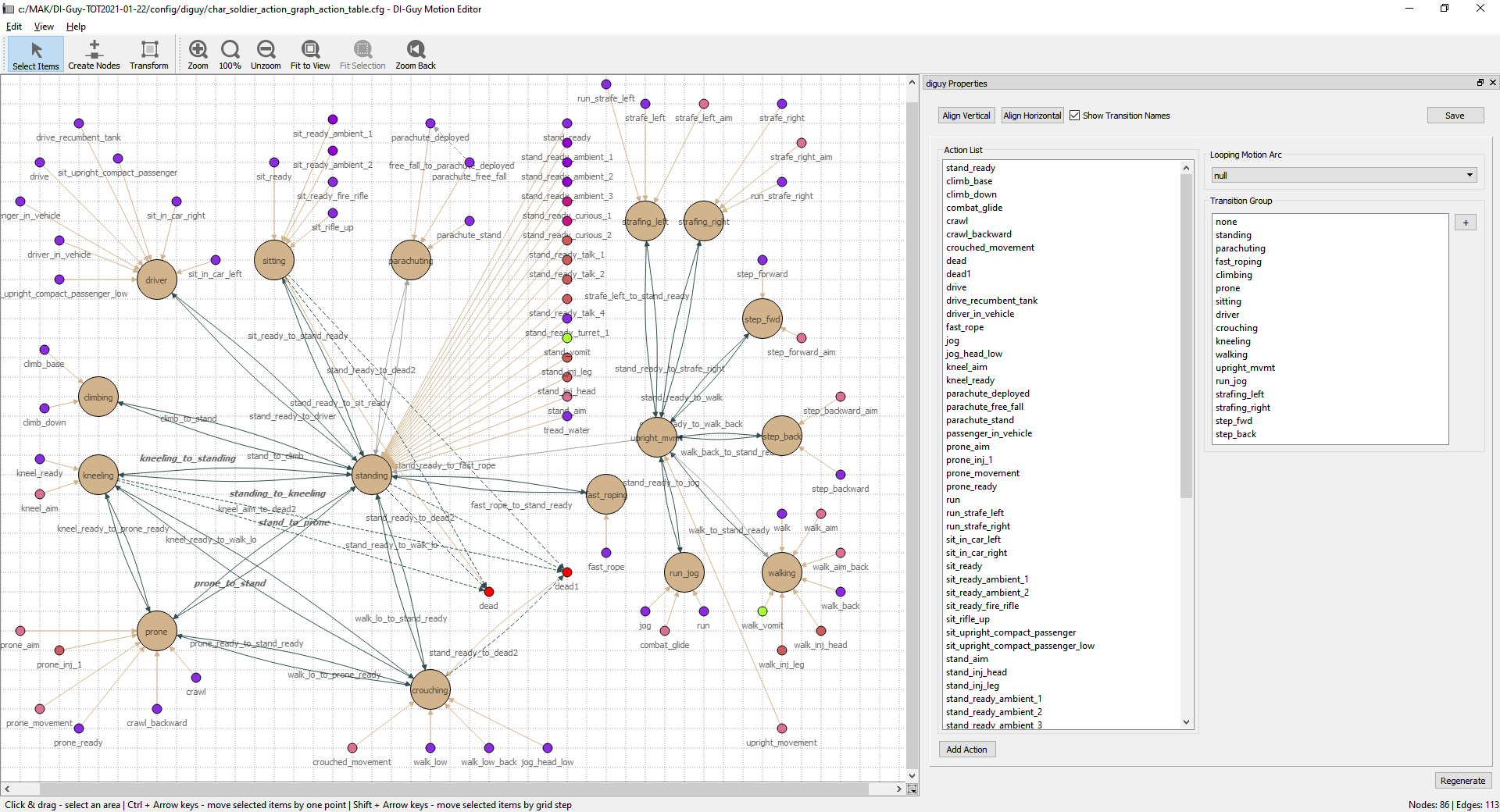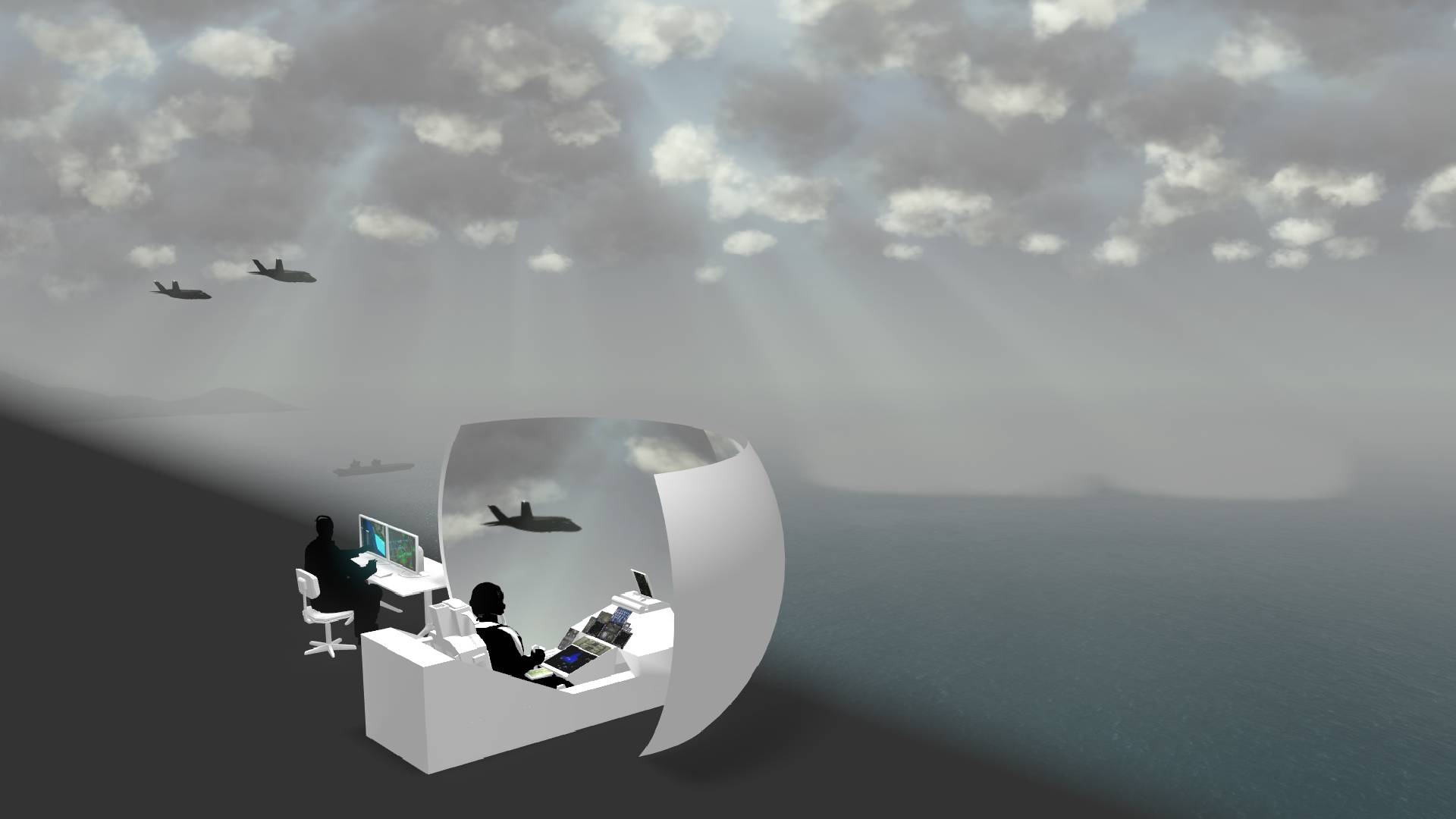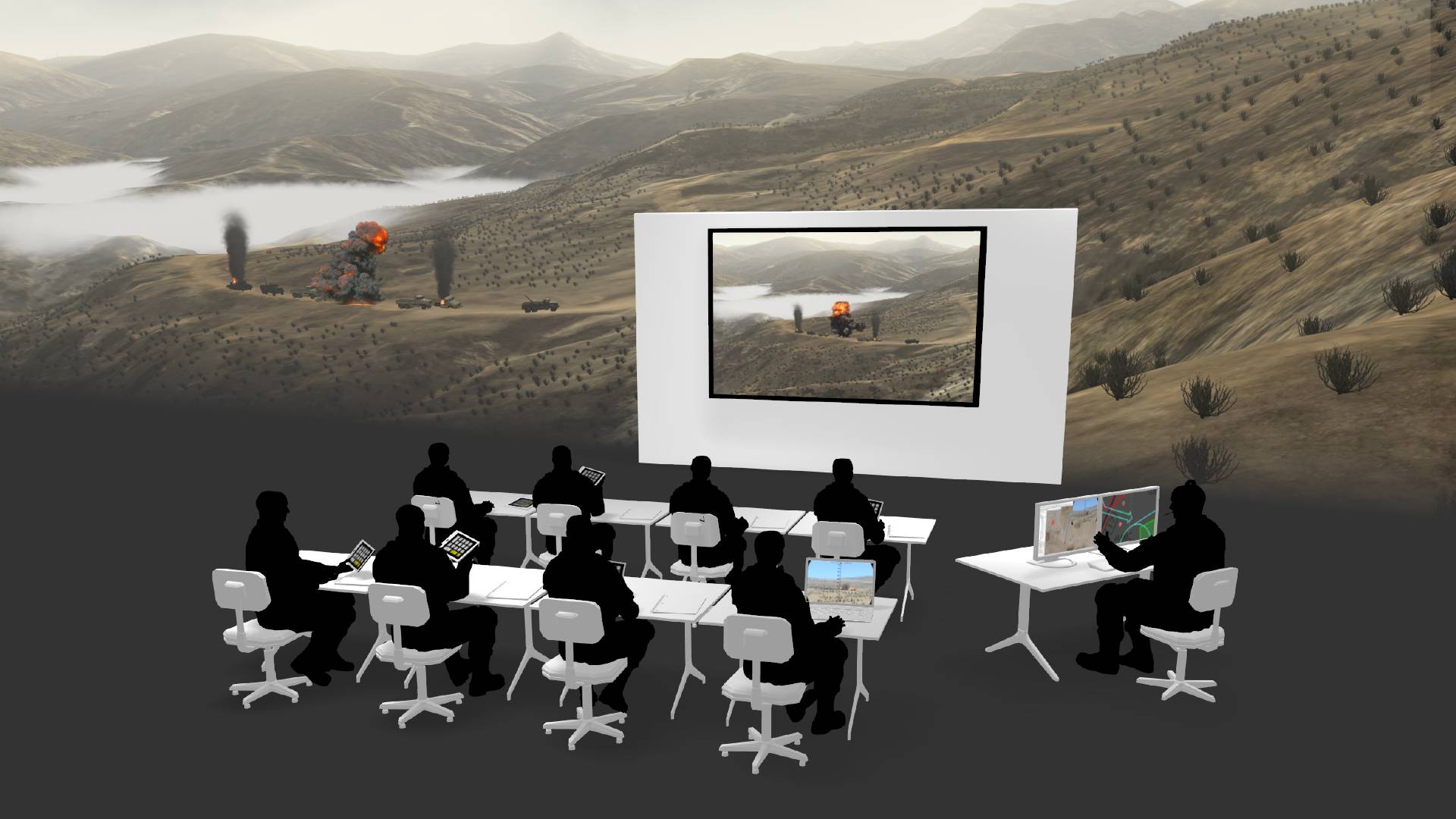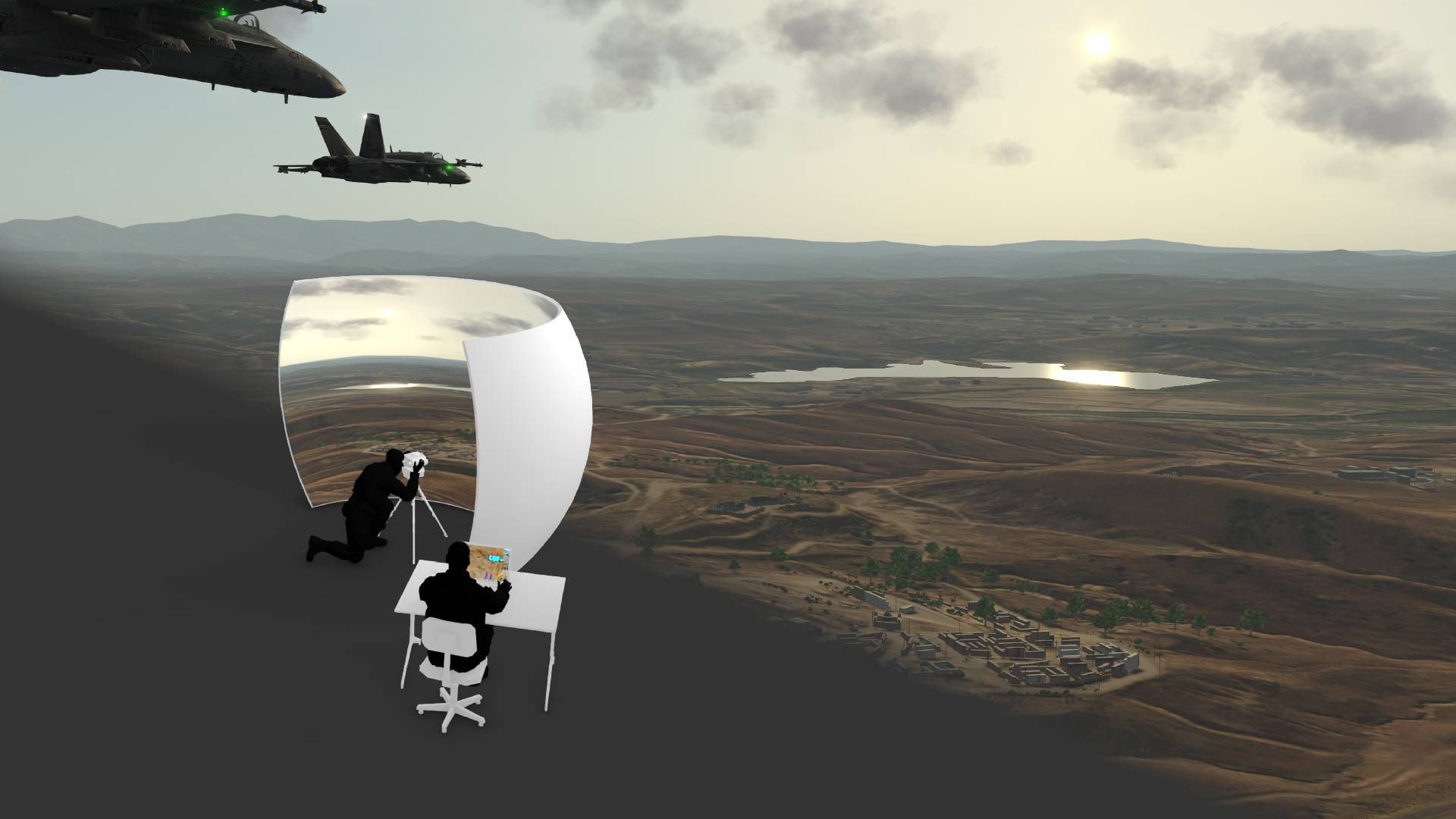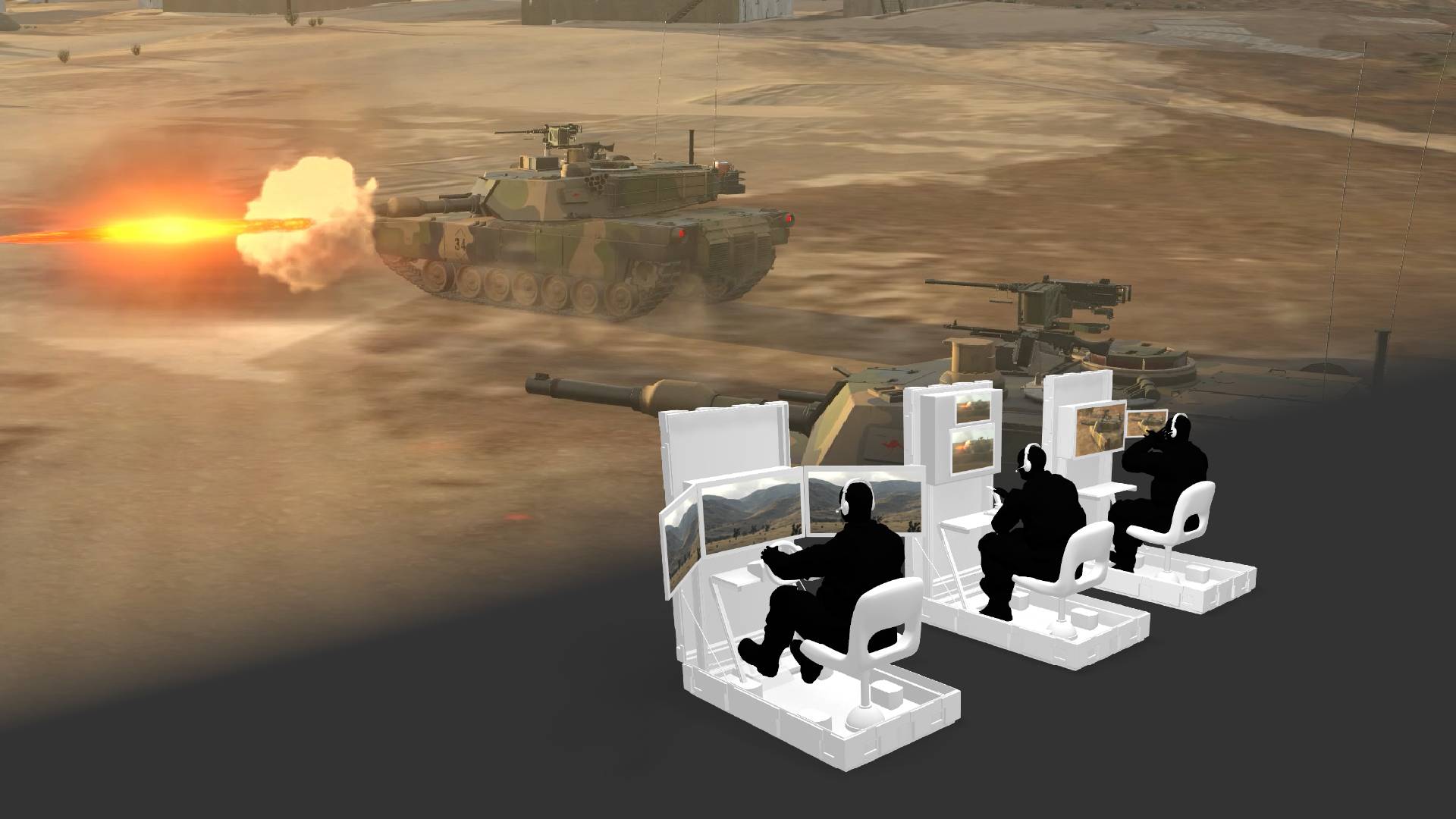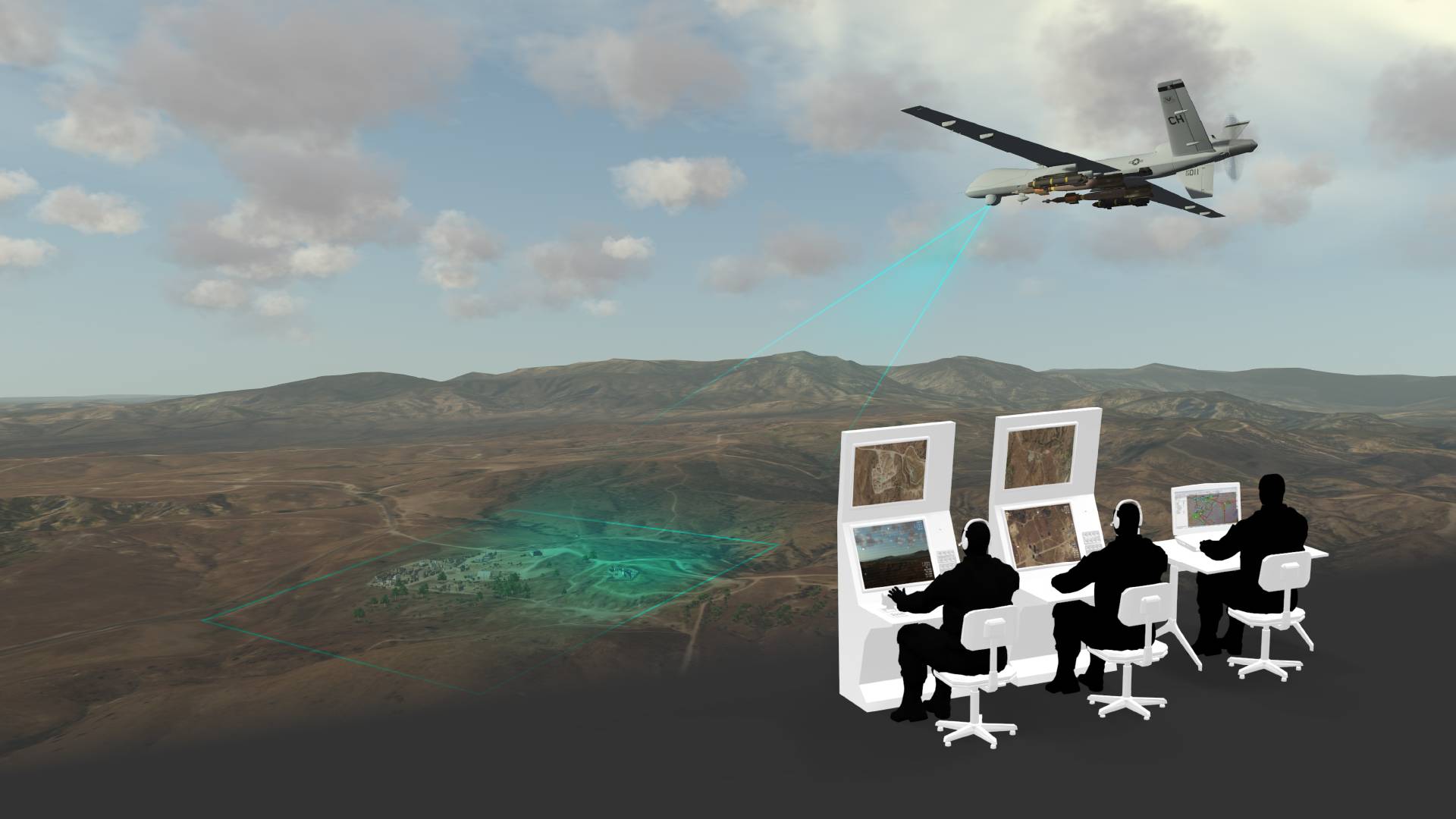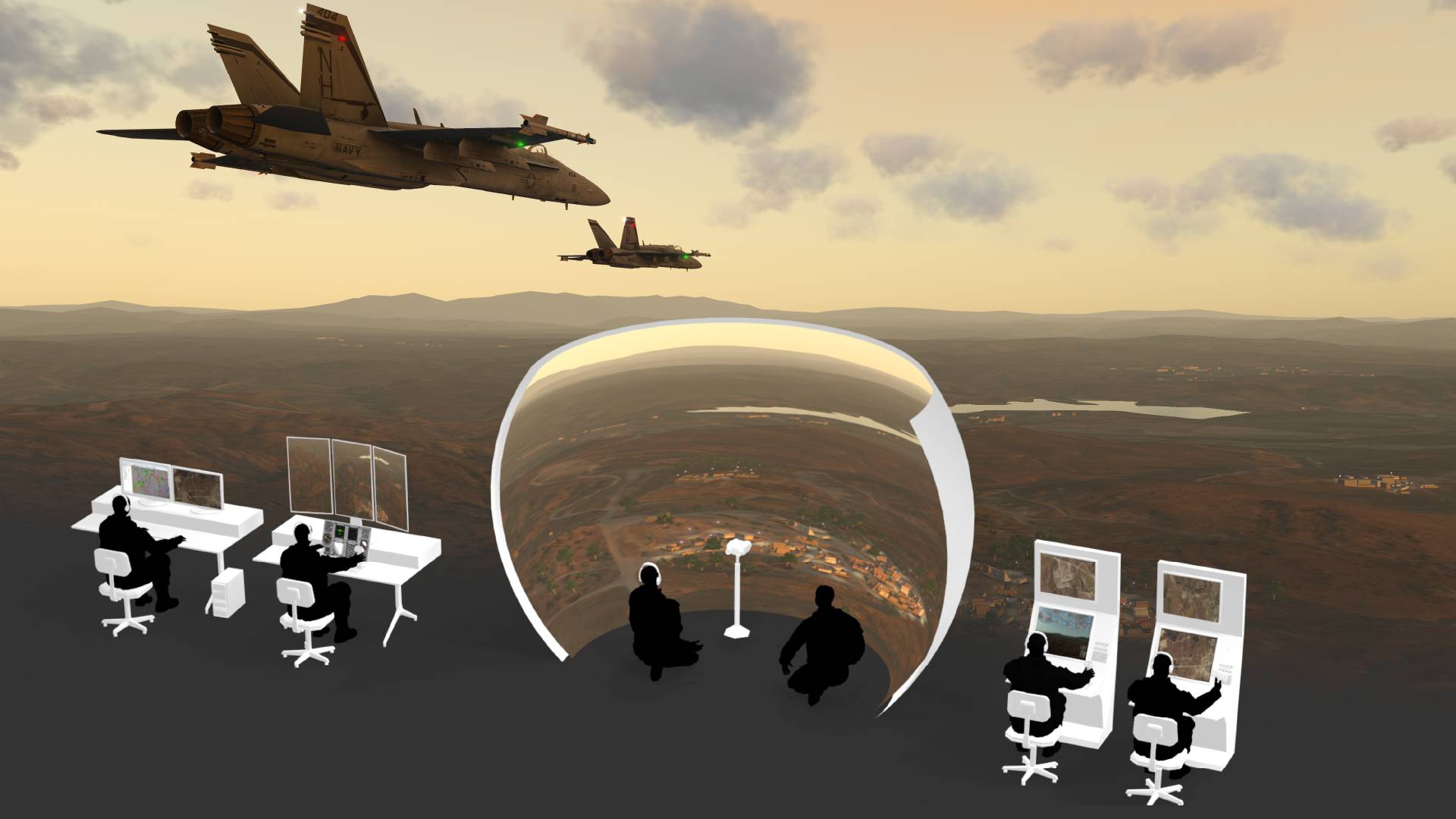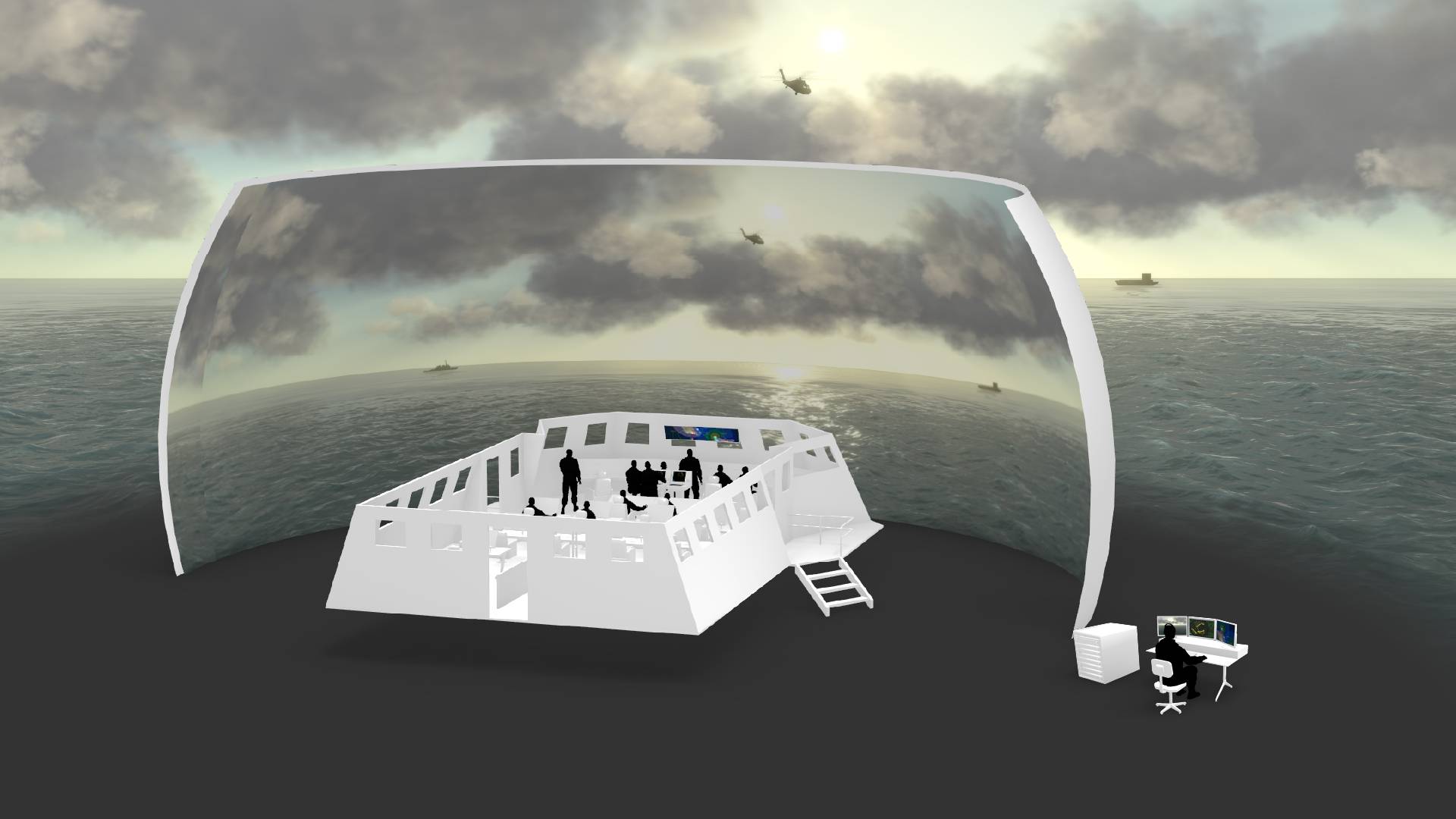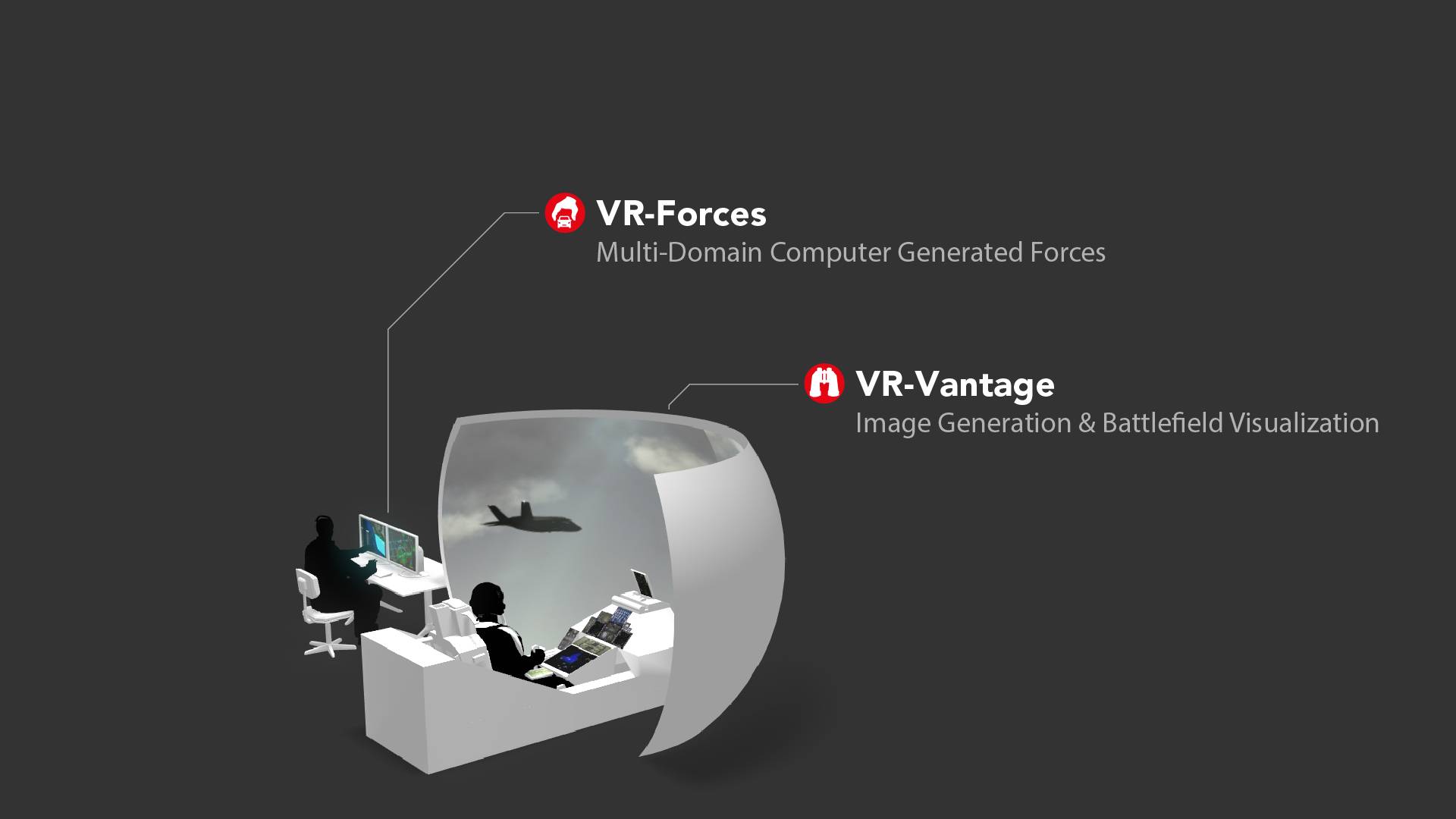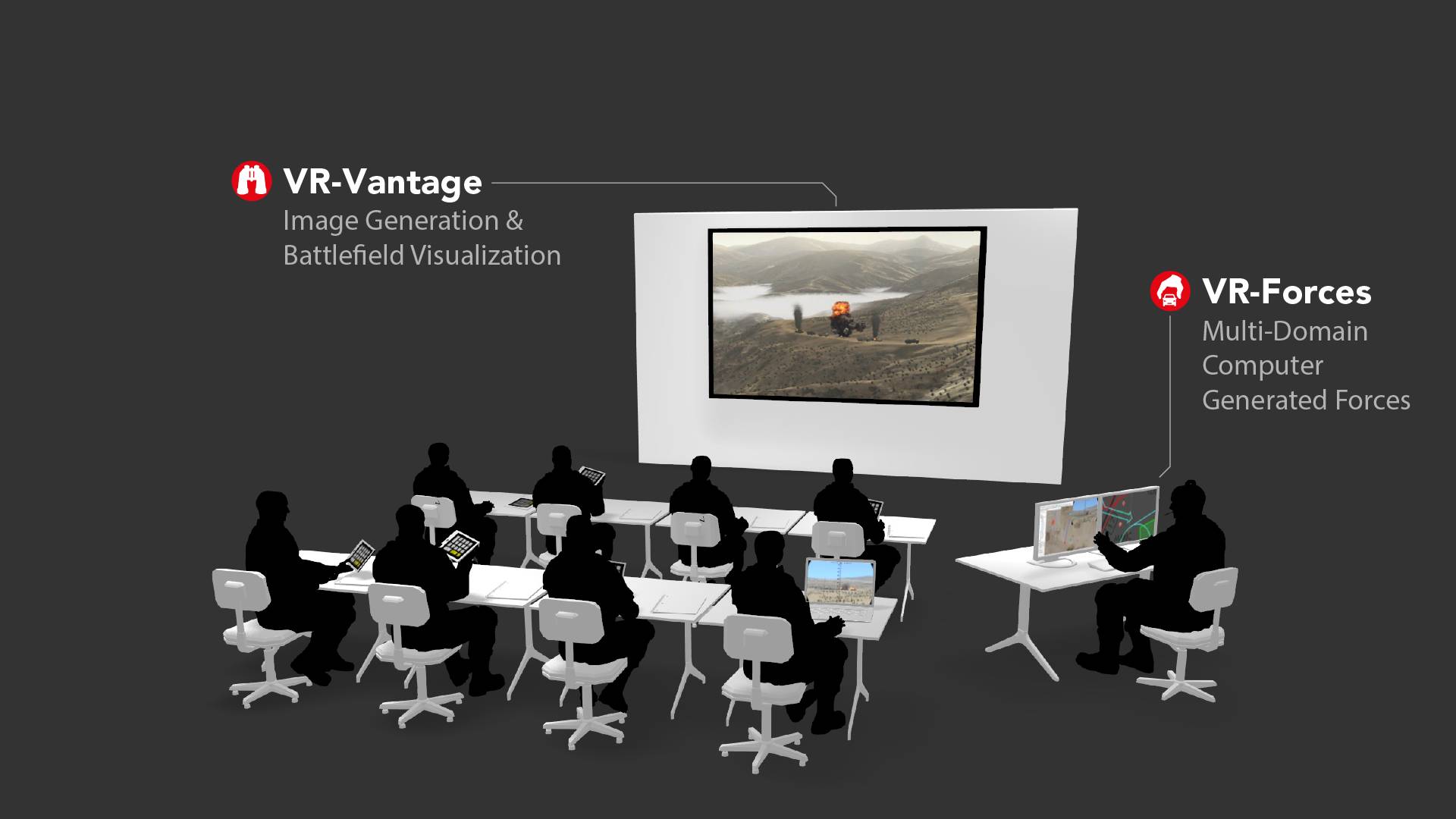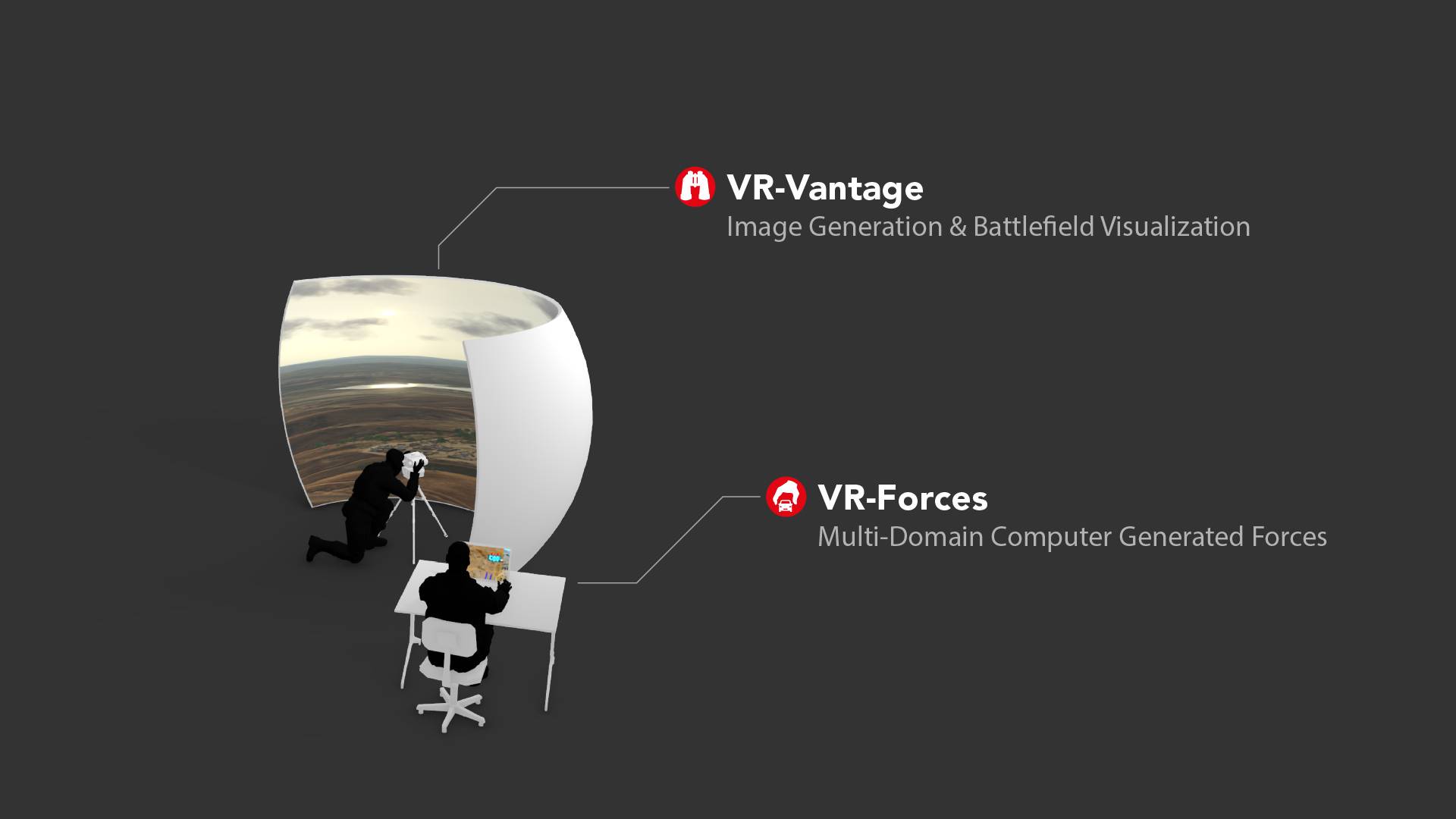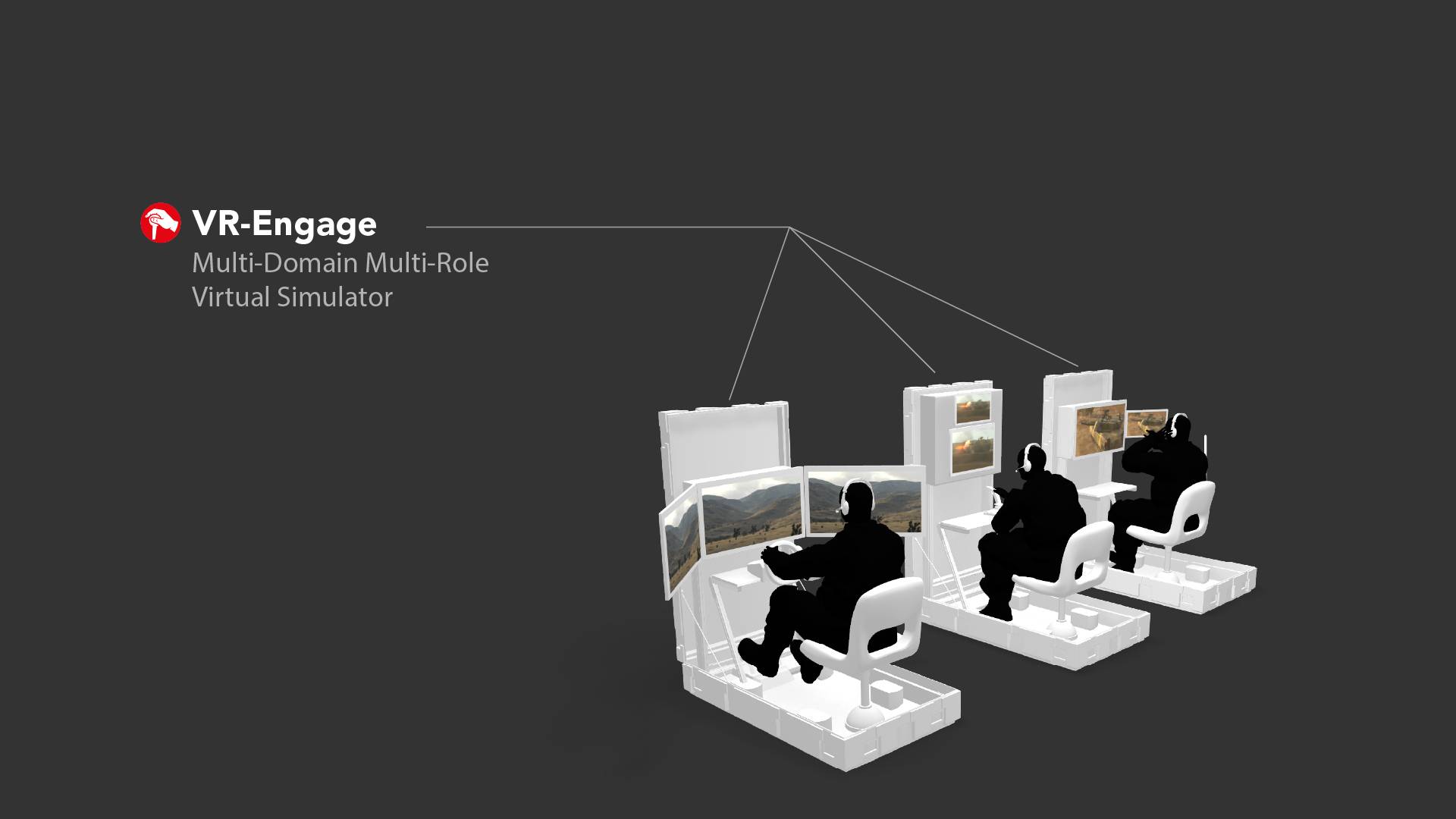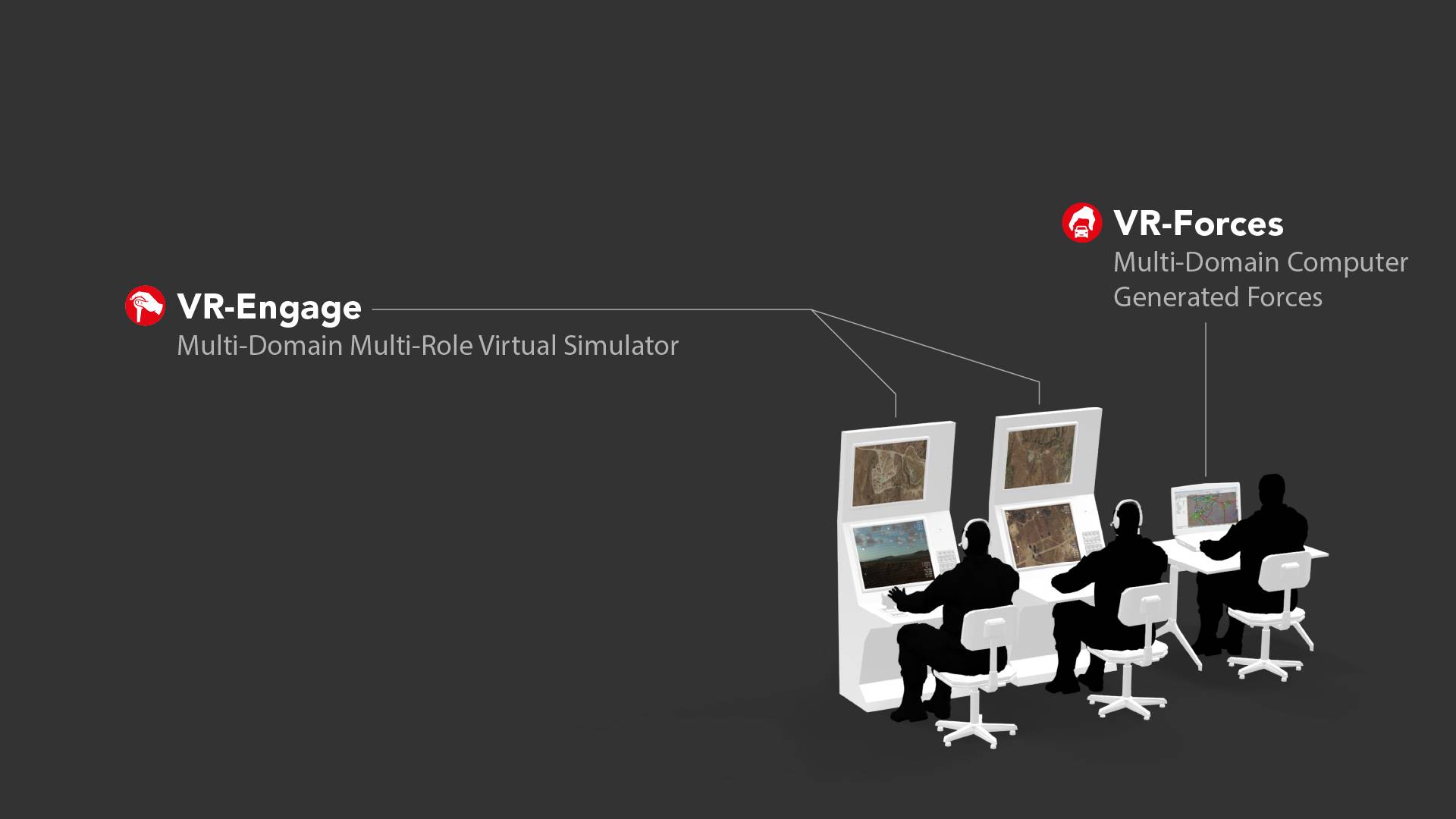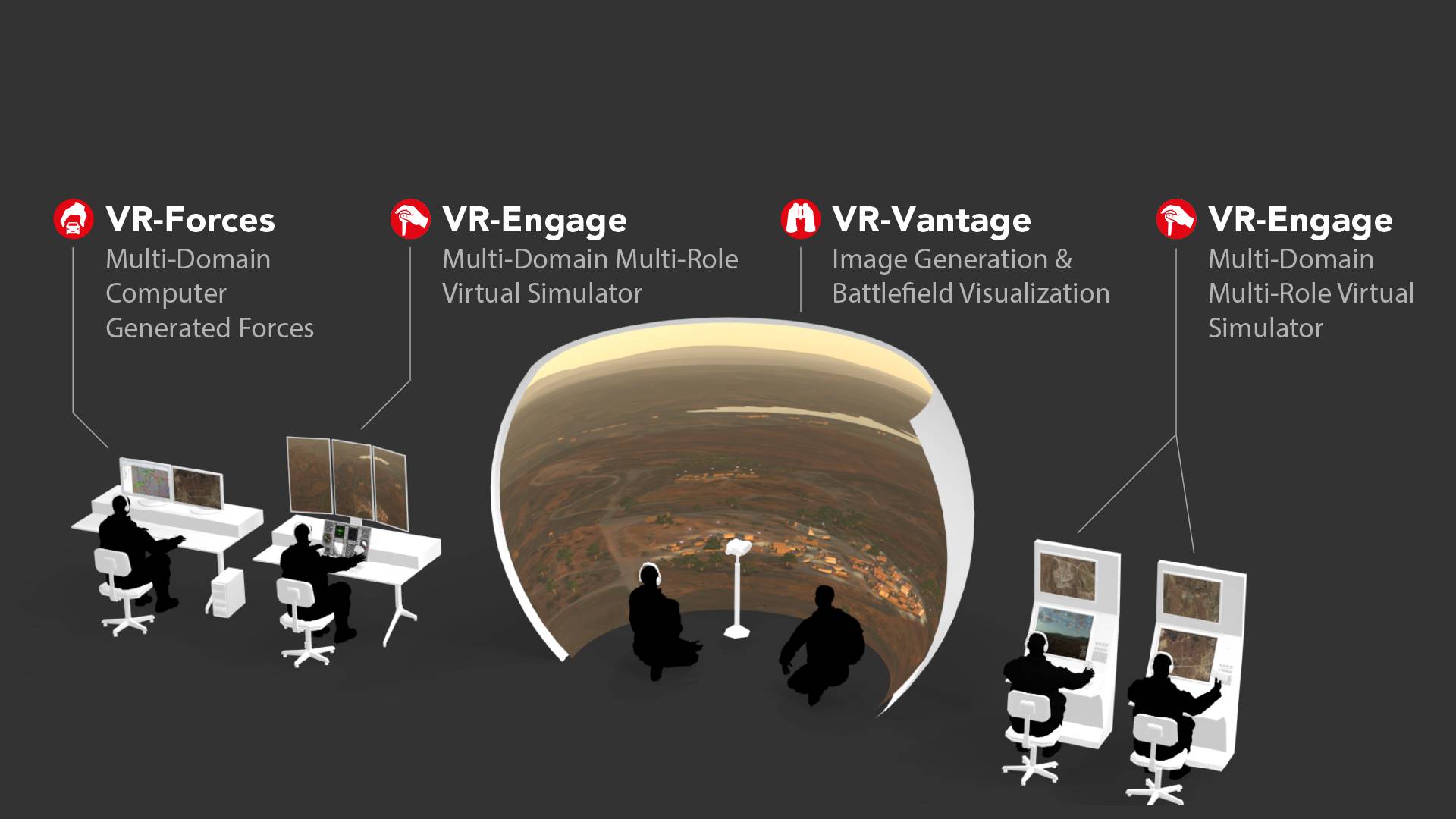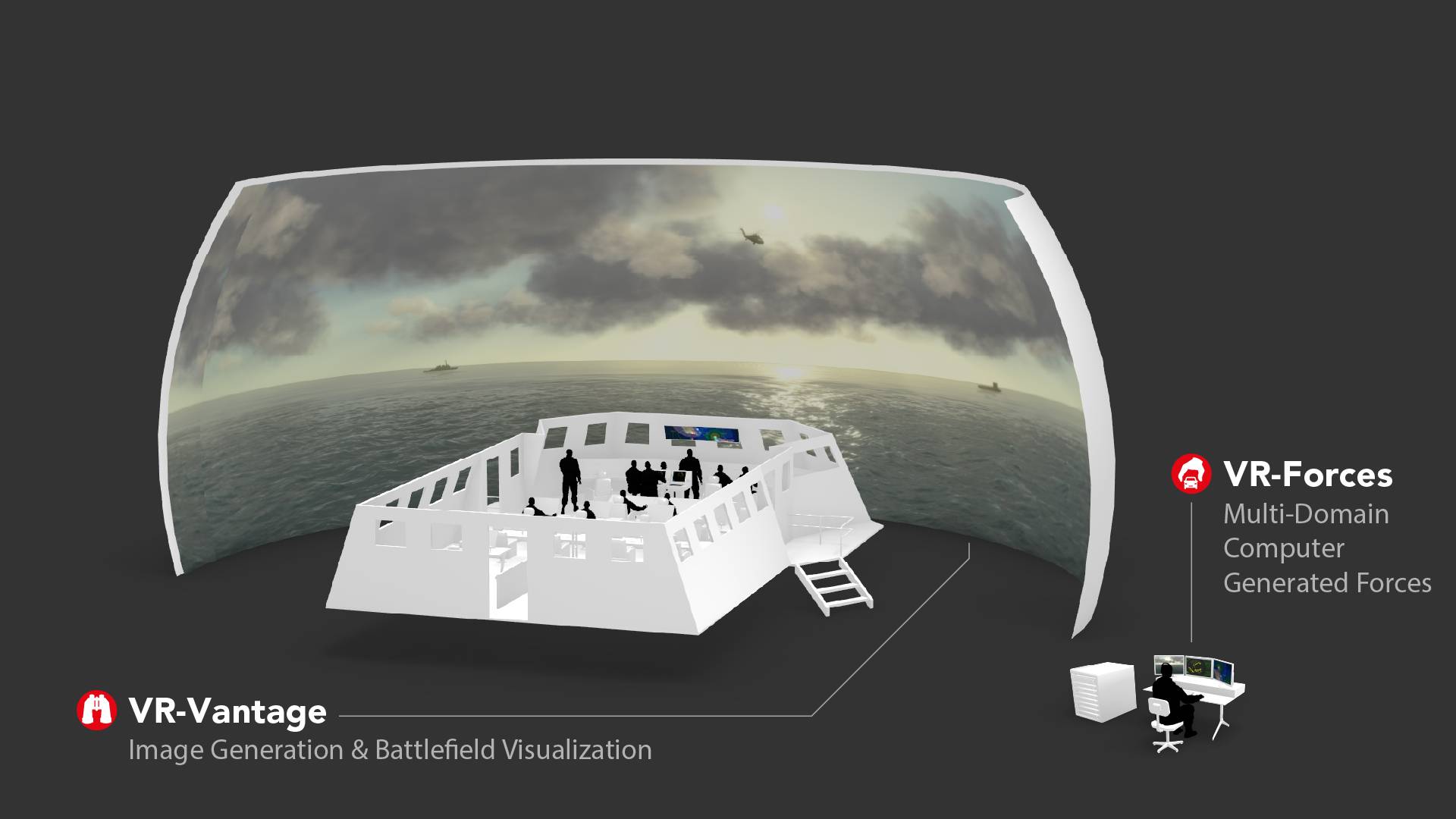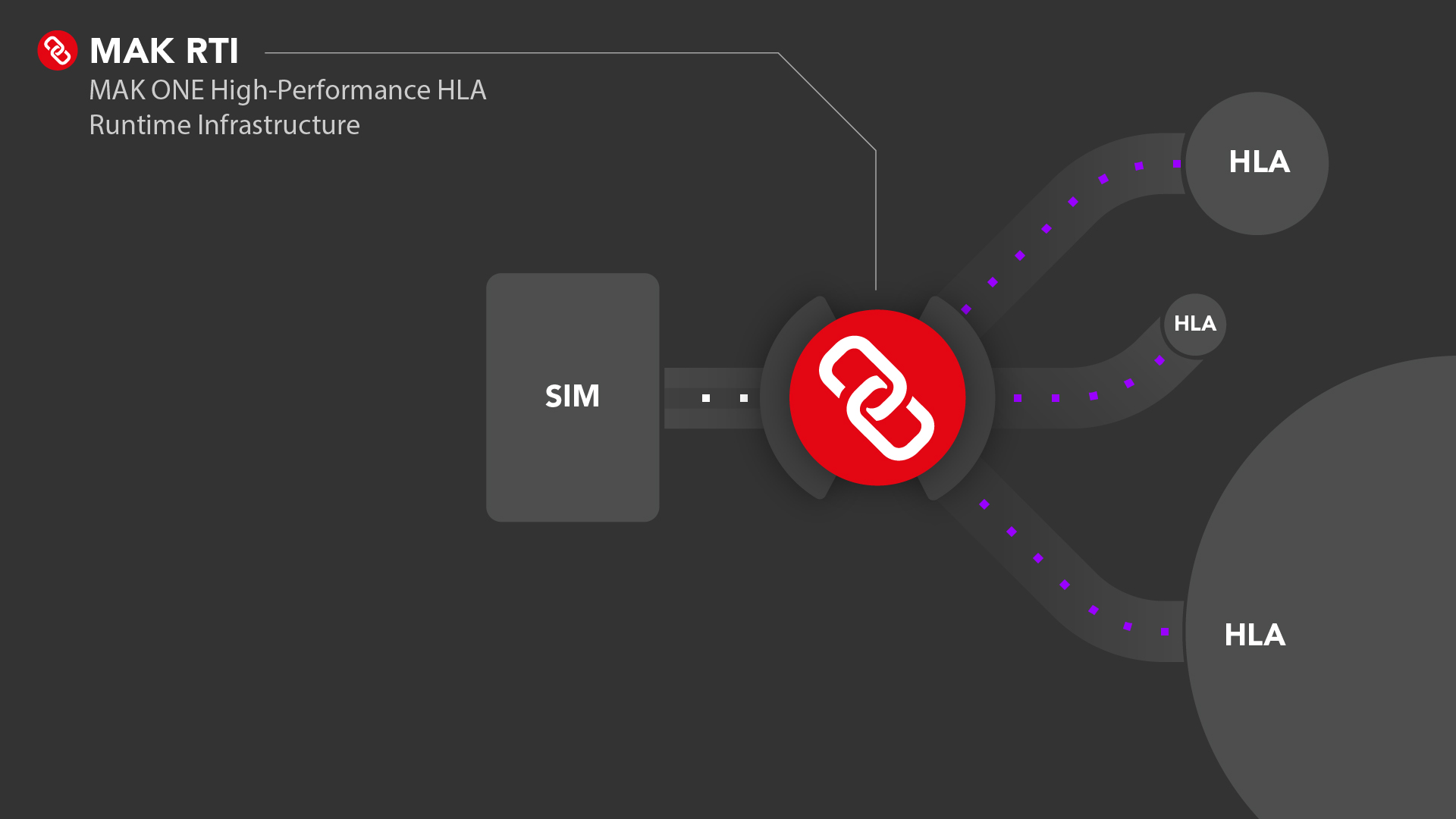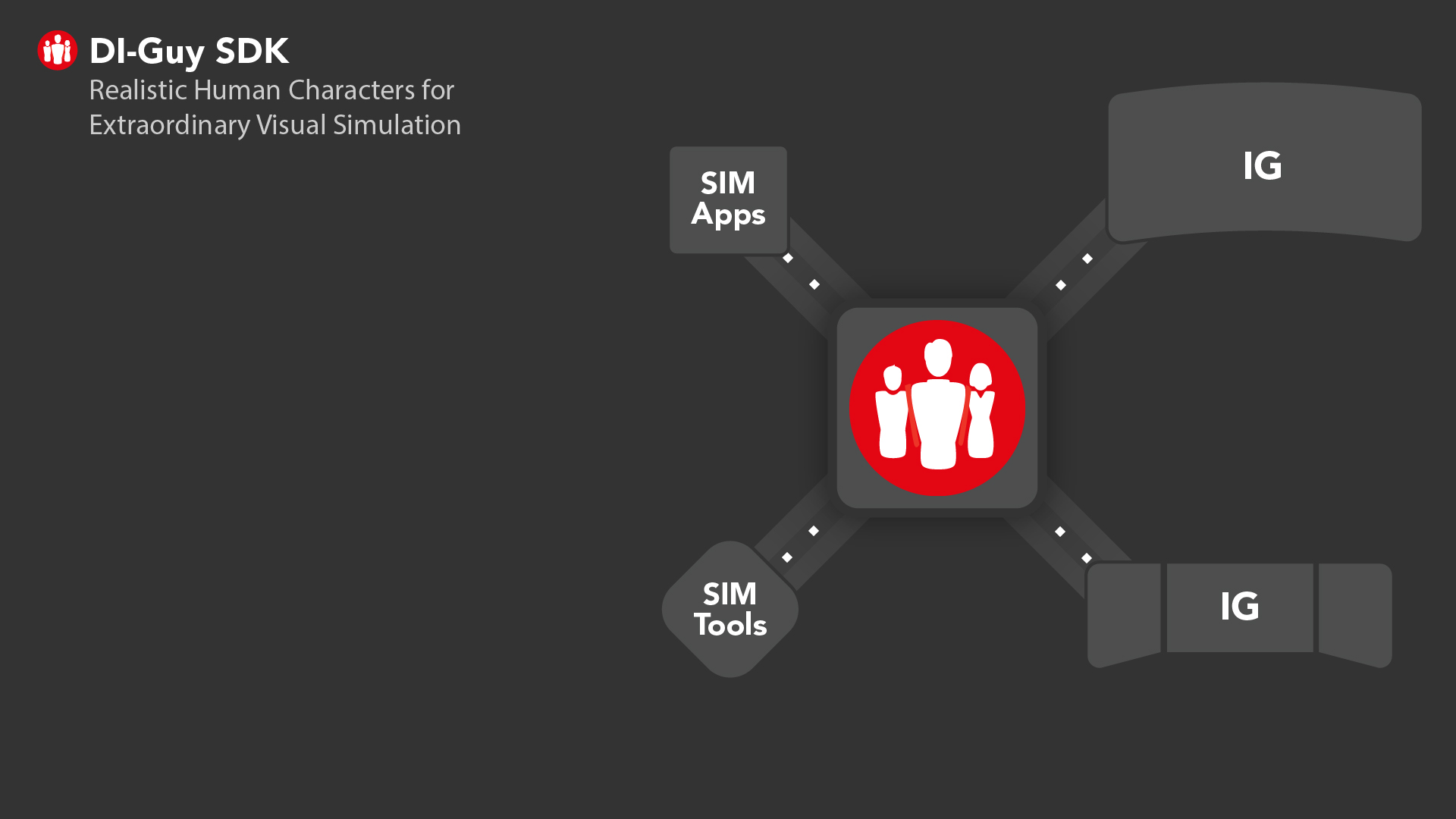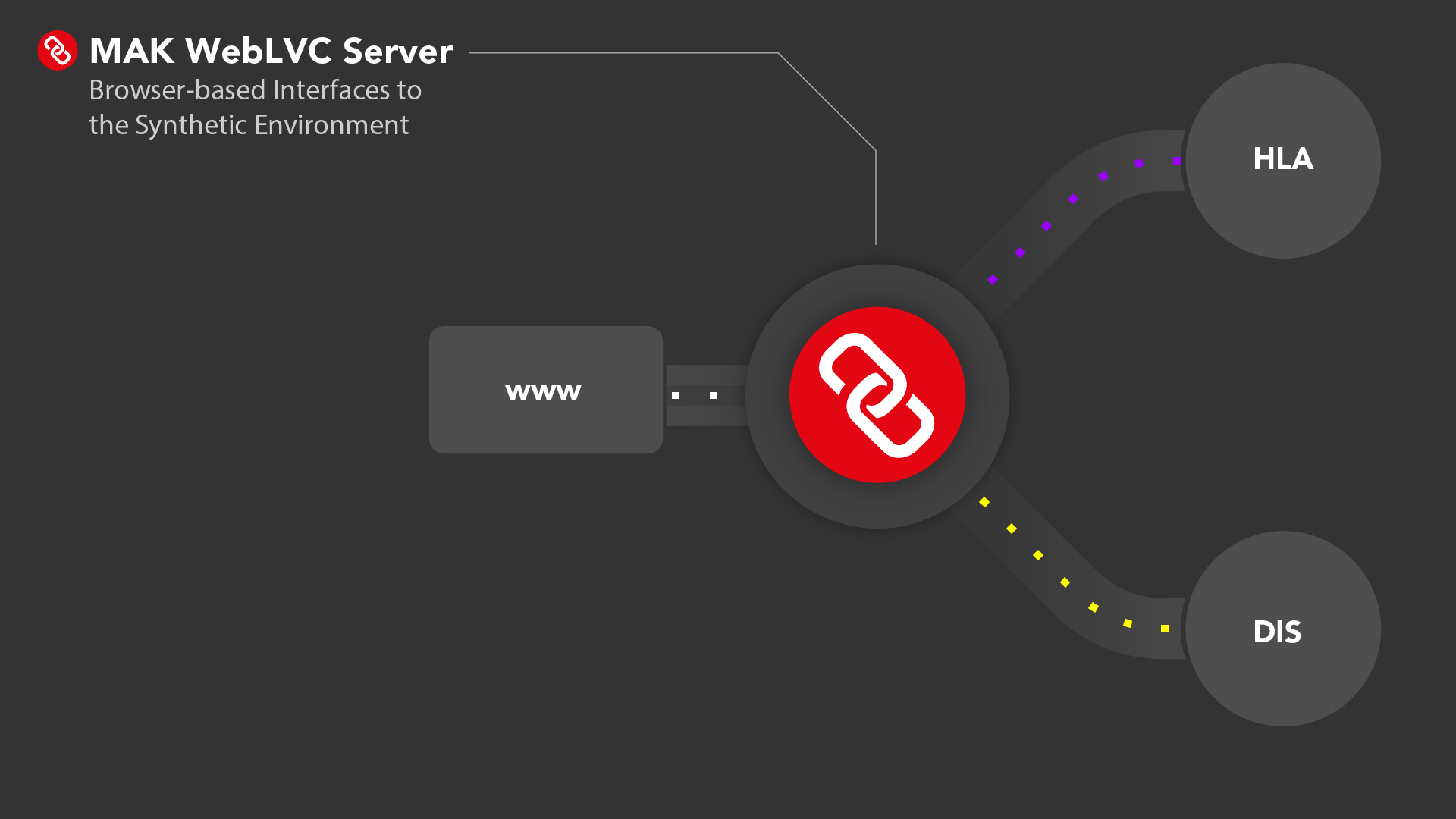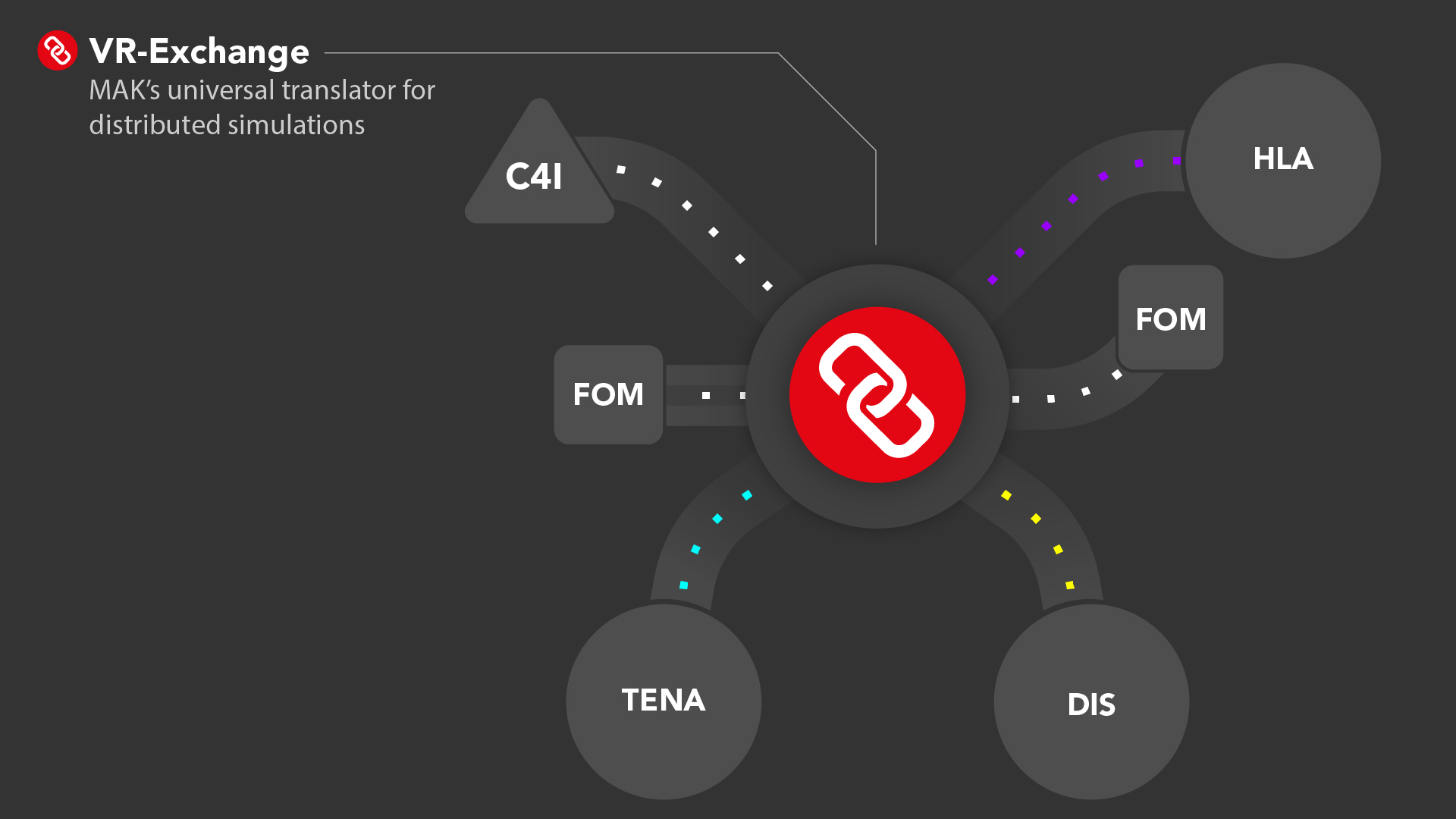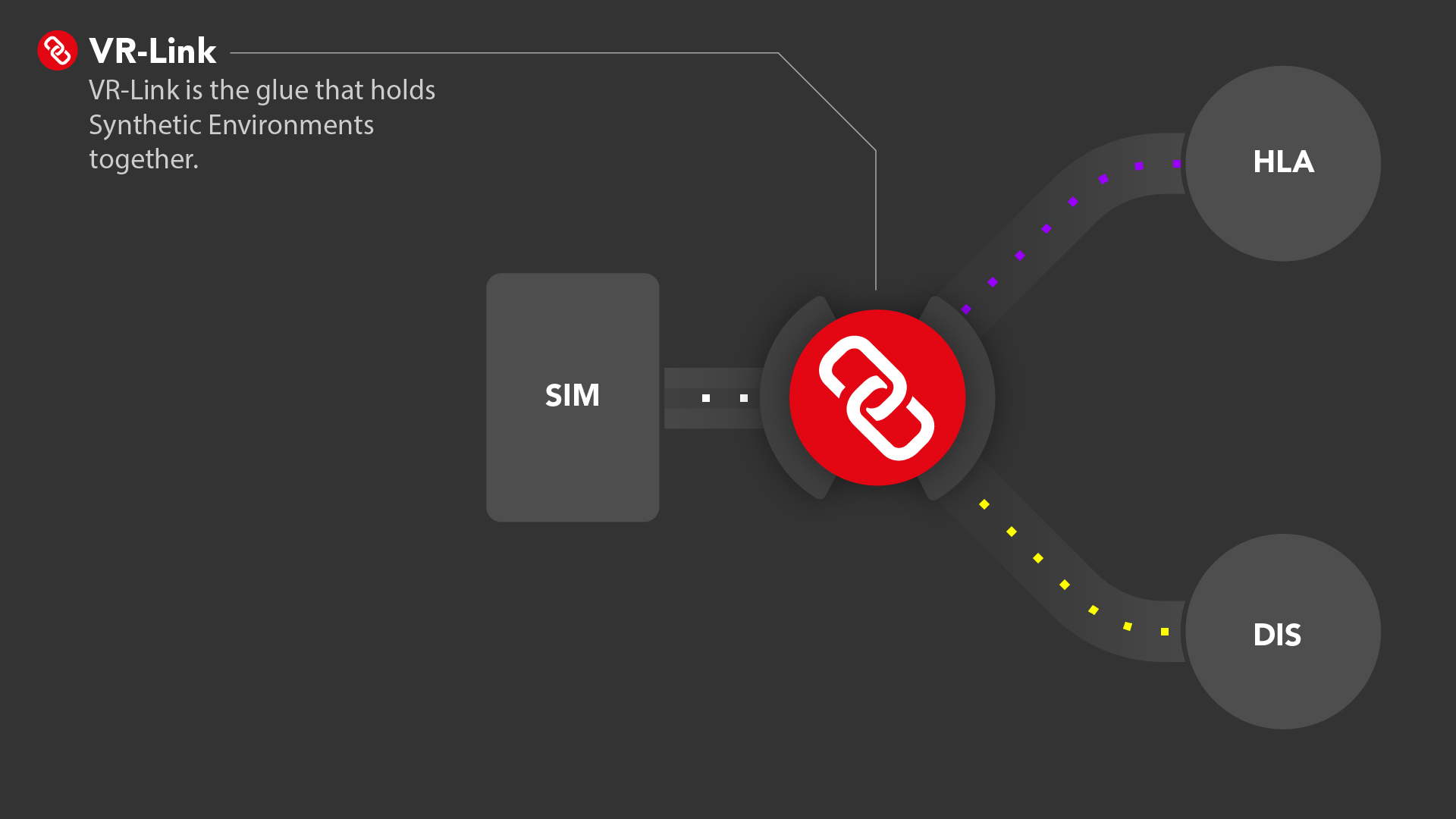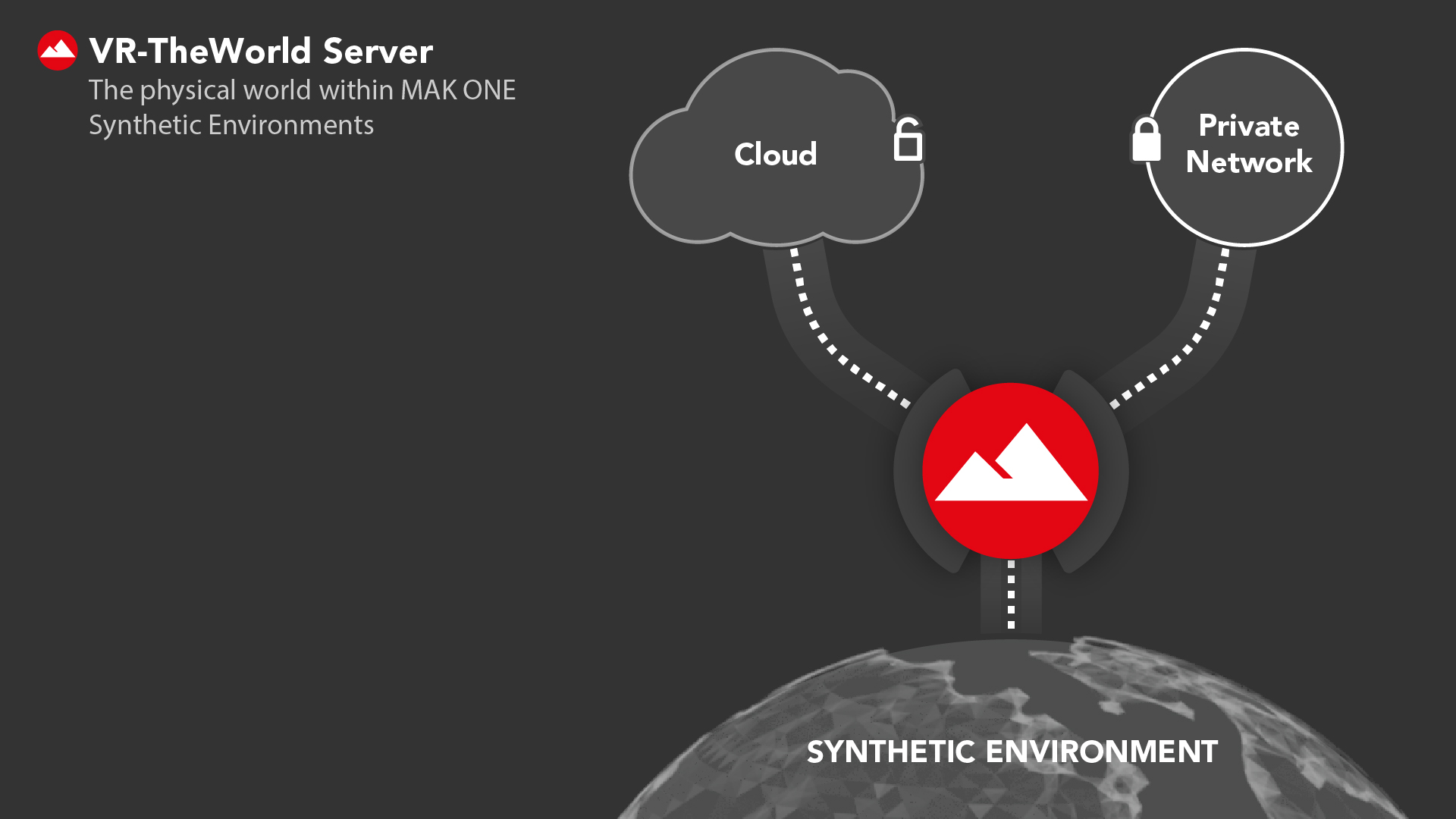
Brand New and Lasts Forever
The software platform for modeling & simulating whole-world multi-domain synthetic environments that stands the test of time and evolves with our customers
MAK ONE is a complete suite of modeling & simulation applications with infrastructure tools to create multi-domain synthetic environments in realistic geographic and environment representations with accurate behaviors and focused model fidelity.
MAK ONE is fully customizable with configuration tools and application programming interfaces (APIs) available at all levels of the technology stack.
The MAK ONE Philosophy
Our customers want software that is Brand New and Lasts Forever. That’s MAK ONE.
The MAK ONE architecture is designed so that people can build simulations in a dynamic synthetic environment today, and then connect their simulations with other systems whenever the time is right – now or ten years from now. When we say Brand New and Lasts Forever, we mean that the MAK ONE platform is built with flexibility and interoperability at its core so it can stand the test of time as requirements change. What's brand new are the technology, models, and the content inside that we continually build upon to meet our customers’ evolving needs.
Interoperability "all the way up" the technology stack
MAK is known for our interoperability tools – they’re how we got started as a Commercial Off the Shelf (COTS) provider more than 30 years ago. We also worked on the committees to define the open standards that we all currently use for interoperability at the network level.
Now we operate on a principle of interoperability “all the way up" the technology stack – open standards, open APIs, and open systems – which allows MAK ONE users to customize however they need to.
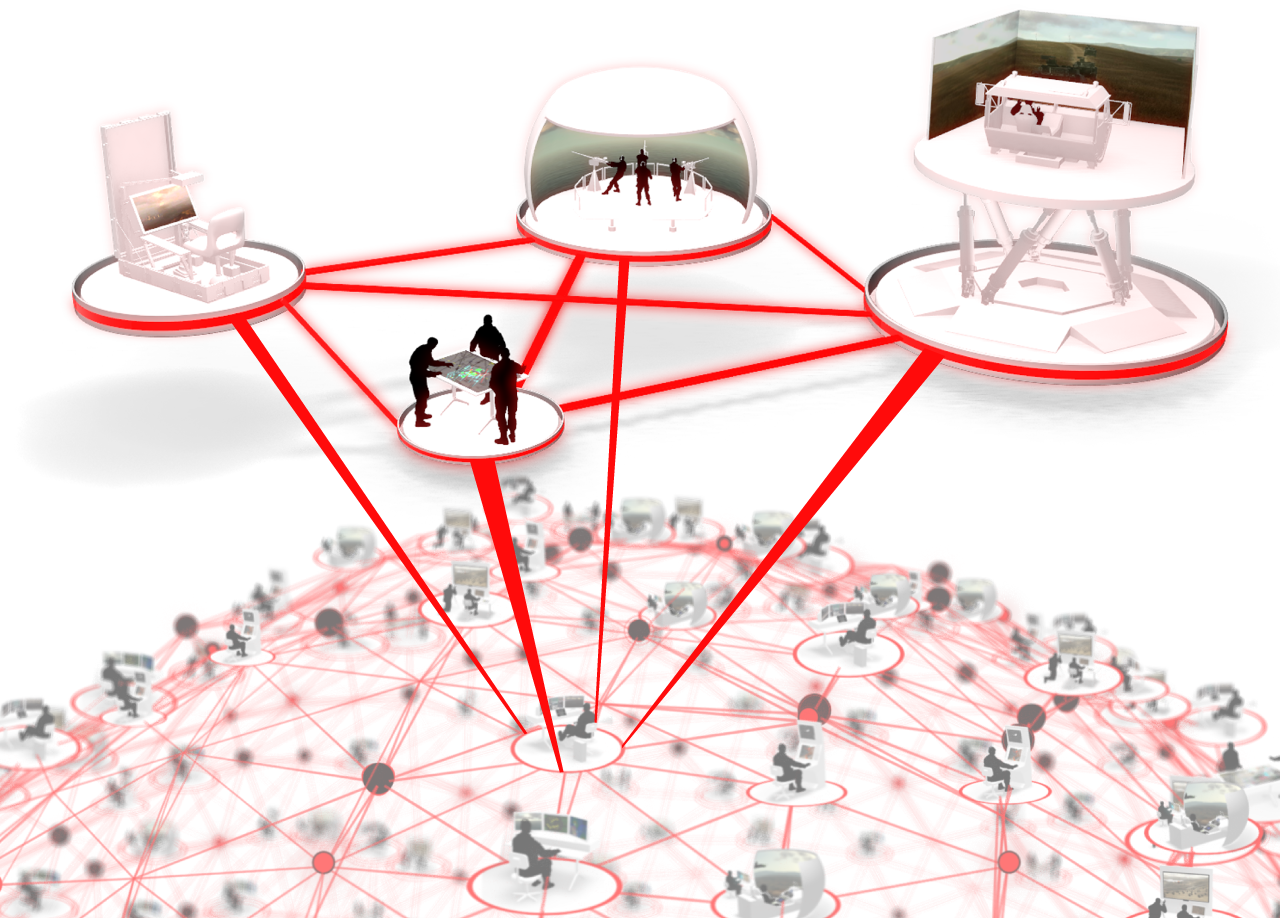
At the Network level – Share entity state and interactions with any other simulation system that also follows the standards. (We also have tools to help even when others don’t play by the rules.)
At the Applications level – Simulators built on the MAK ONE platform can also share the terrain, weather, visual and simulation models, simulation behaviors, and scenarios.
At the System Level – Operators of MAK ONE-based systems will share a common understanding of how the simulations work, saving time on staff training.
Those who choose MAK ONE will experience less friction, faster integration, higher correlation, and better performance – all the way up.
Flexibility = Customizability + Extensibility
MAK ONE is flexible. At its core, this means that it is customizable and extensible so that our customers can build whatever their requirements dictate.
This flexibility comes in many forms:
APIs – APIs at all levels of the technology stack enable users to create or extend the networking protocols, and to add their own platform or capability-specific plug-ins into the MAK ONE applications; incorporate any MAK ONE applications and tools components (such as Data Logger or VR-Vantage) into their simulation environment; or to control VR-Forces entities from a separate application altogether.
User Control – To do things like modify your order of battle; add your own 3D content or human motions; configure entities with specific weapon systems and sensors; modify the PK tables; customize behaviors to match your doctrine; match to your own sensor representation (both in the human-machine interface and 3d rendered scenes), and more.
Terrain Agility – The ability to choose from many terrain formats and terrain loading strategies. You can even mix and match terrain of different types to compose your own terrain for simulation. See the new more realistic and geo-specific Procedural Vegetation.
Choosing MAK ONE means benefitting from the MAK Ecosystem
The MAK Ecosystem is possible because of our MAK ONE API's MOSA (Modular Open Systems Approach) environment. You can think of the MAK Ecosystem of technology partners, complementary product partners, and international distributors like the simulation systems we help people make. Our core values of interoperability and flexibility are built into the way we make software at every level – this means that we partner with companies with great technology rather than rebuild it to be exclusively MAK’s. We collaborate with other companies to help our customers find the right solution. We support our customers in mastering the simulation arts over the long term, and they become centers of excellence capable of providing even greater solutions for their end-users.
At MAK, we care about our customers’ outcomes. We are here for you as you get into your project, and we’ll go the extra mile when you need us most.
MAK ONE is the simulation platform of choice by governments and system integrators around the world as they join disparate simulations into common synthetic environments.
What's New in MAK ONE 2024?
The MAK ONE synthetic environment now comes with even more built-in richness with higher simulation fidelity and key visualization enhancements. Our continued focus on interoperability is baked into updates across the suite of products. Watch the video and read the highlights below, or check out the product release notes for all the details.
A Richer Synthetic Environment
MAK ONE is a world alive with activity! This release continues to fill the MAK ONE synthetic environment with even more, including:
- Procedurally Generated Vegetation: We’ve significantly upgraded the MAK Earth Terrain Engine to make the world more accurately reflect the biodiversity of planet Earth, featuring incredible richness of detail making MAK ONE an even better digital twin of the Earth. (The MAK Earth Terrain Engine already did a great job of procedural imagery including buildings and roads - now it has the vegetation and biodiversity to match!)
- Dynamic Terrain: We’ve added in more simulation capabilities that allow planet Earth to change based on activity within the simulation. Some of these dynamic terrain updates include the addition of runway craters and ditches and berms, as well as the ability to destroy procedurally generated buildings.
- Pattern of Life: It’s the background activity around us that makes the world feel more alive and look more realistic. This release also has even more background activity to fill in planet Earth - this includes clutter ships and clutter air traffic over wide areas – driven from recorded real-world AIS and ADS-B data. Clutter aircraft can have IFF transponders to stimulate electronic warfare (EW) systems.
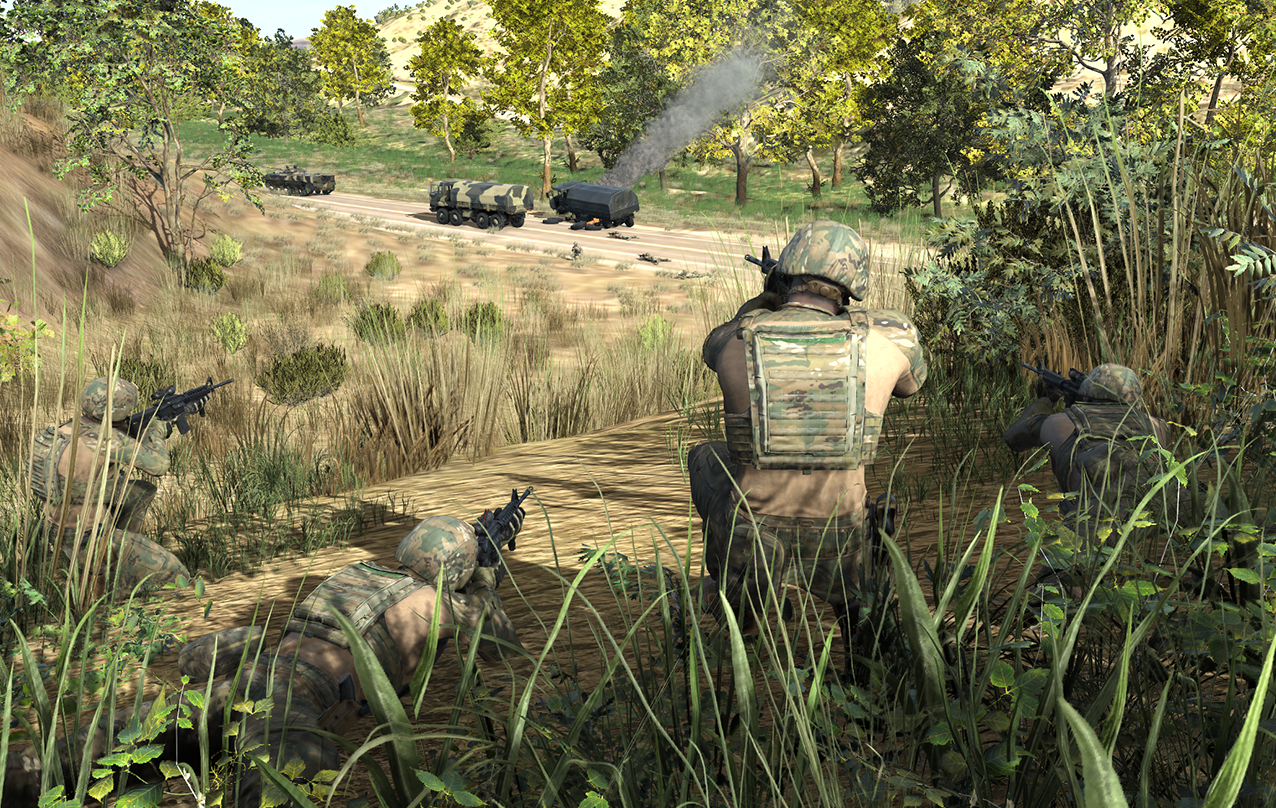
Increased Simulation Fidelity
We’ve increased simulation fidelity in this release of MAK ONE by adding new simulation models, giving you more control over scenario planning and more control over aspects of the environment. This makes it easier and less expensive to replicate your operational environment.
Model updates include:
- Aerodrome lighting and condition control, and runway closures
- Loiter munitions, anti-tank weapons, and multiple rocket launch system
- Civilian Air Traffic based on real ASD-B Data
- Full IFF Support including Mode 5/S with Sweep, Lethal, and Individual Interrogation
- Planning improvements via Sync Matrix updates
- Improved station keeping
- Ground vehicle route following
And, of course, we’ve continued to update the architecture where needed, such as the way weapon systems choose their targets, more accurate lasing, improved dismounted infantry movement.
Refer to the product release notes for the 400 additional features included in the MAK ONE 2024 release.
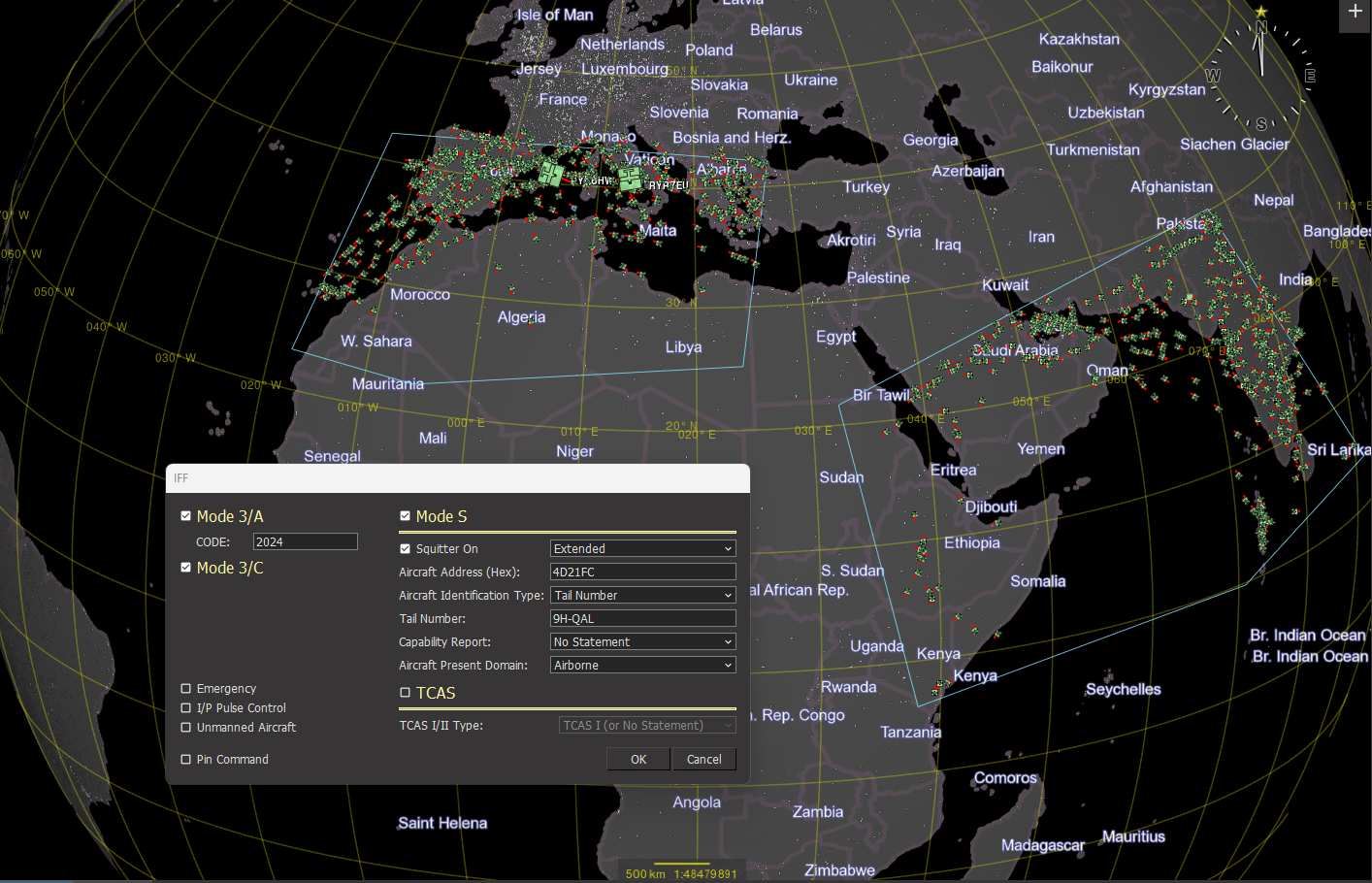
Improved Visualization and Understanding of the Virtual World
This release introduces updates across tactical graphics, visual architecture, realism, and visual models, ensuring a more intuitive user experience with improved stability and performance, which helps our customers better visualize and understand their worlds.
- Better Tactical Graphics and Visuals: We’re making the tactical graphics in MAK ONE more reflective of those in operational systems. These new tactical graphics and visual changes include updated MAP coloring, gridline decluttering, projected tactical graphics, height lines, XR mode, heading, and velocity lines. We’ve also added hundreds of new tactical graphics from the MID STD 2525D and APP-6 standards.
- Customization of 3D Models: In addition to hundreds of new models with replaceable textures, including airline logos, replaceable hull numbers and other markings, this release also adds the ability to replace and swap textures to match operational data.
- Physics-based Sensors: This release includes significant updates to the SensorFX code base that improve EO/IR (electro-optic/infrared) simulation in SensorFX.
- Performance and Stability: Sticking with our “Brand new and lasts forever” motto, our visual architecture updates contribute to better stability via improved memory management.
- Virtual Reality / Mixed Reality (VR/MR): We’ve incorporated VR/MR performance updates that allow users to view their world with a better frame rate.
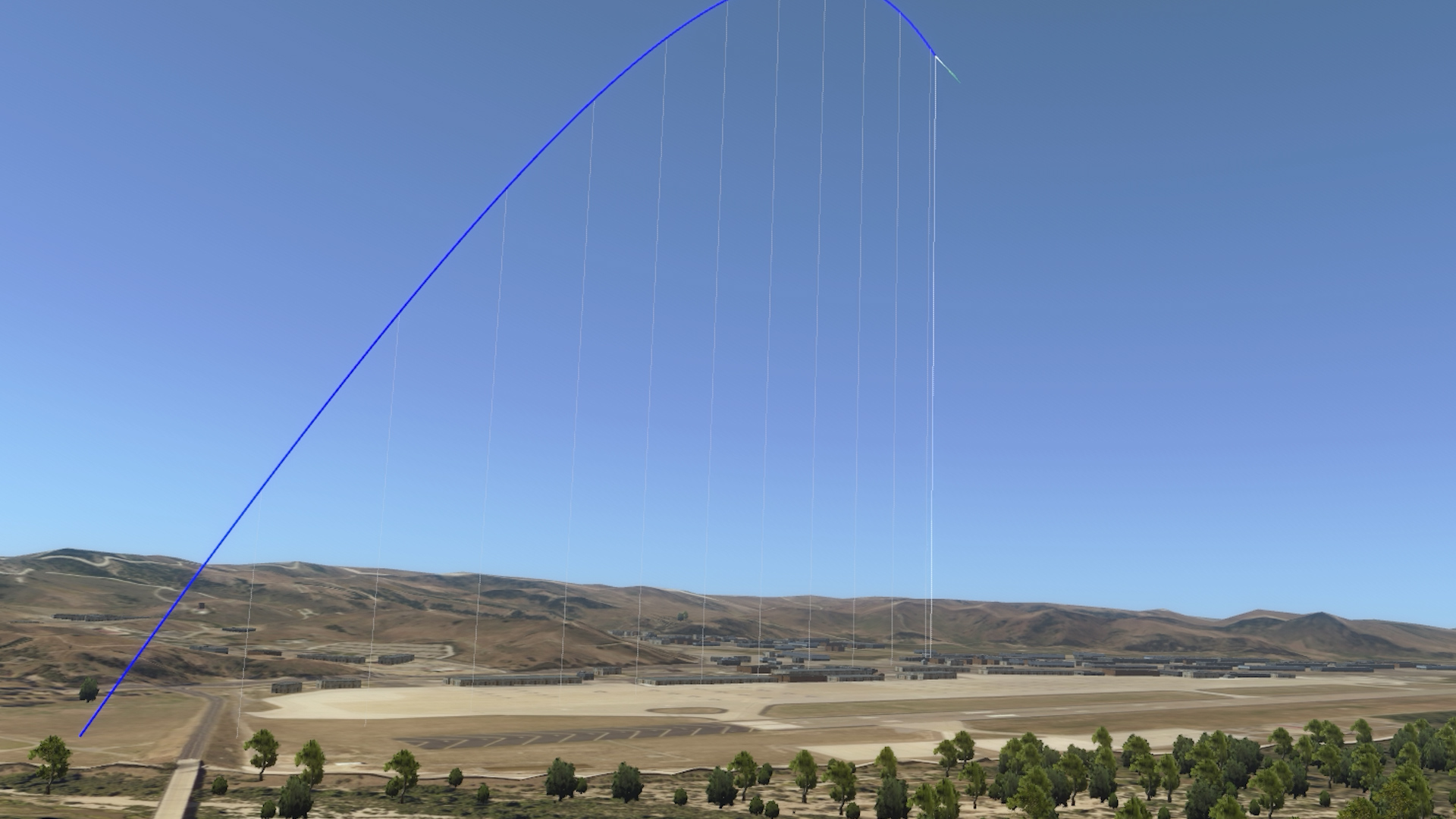
A Continued Focus on Interoperability
MAK is fully committed to open standards, open APIs, and open systems. Of the many interoperability updates coming to this release of MAK ONE, we’ve most notably added native support for the NATO NETN FOM, including METOC model support. Expect exciting announcements about HLA 4 this year!
There’s so much goodness in this MAK ONE 2024 release. Be sure to check out all the product release notes for every detail!
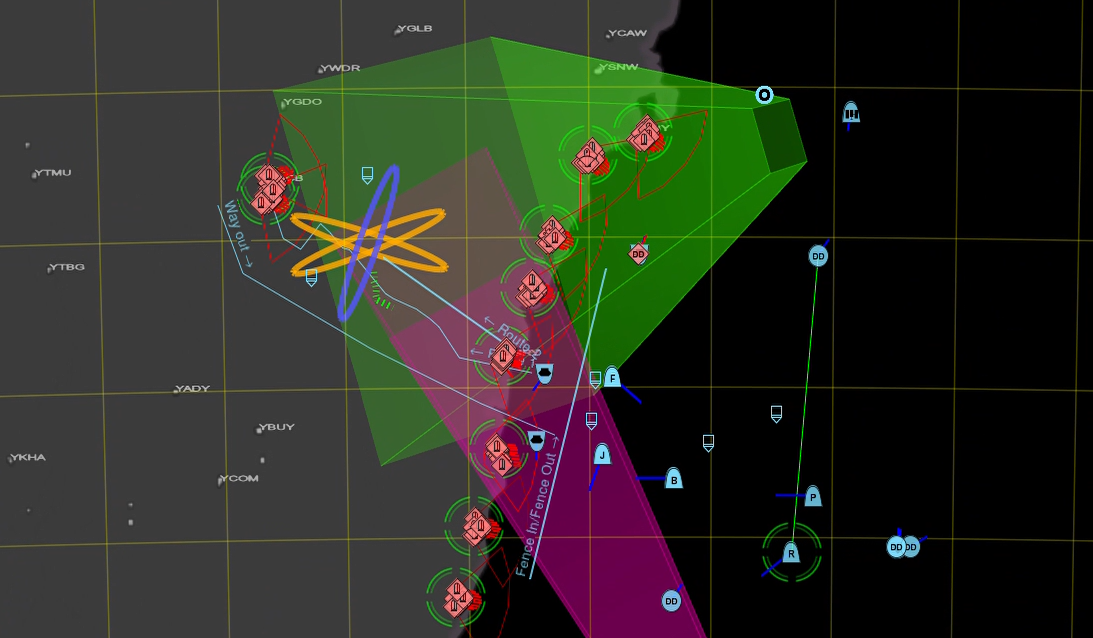
MAK ONE is Designed for Users at All Levels
End-Users
- Plan, prepare, execute & assess simulation scenarios
- Take first-person control and engage with the simulation
- Use visual displays for situational awareness
- Connect to the simulation network and interoperate with others
- Record the simulation activity and play it back for debrief, review, and analysis.
- Choose from world-wide or local area terrain configurations
- Configure the displays to meet user’s specific needs.

Modelers
- Script complex AI behaviors
- Configure the dynamics, systems, performance, and visual parameters of the thousands of pre-defined simulation entities
- Create new entities types
- Build custom dynamics models using 3rd party plugins
- Configuration UI devices and visual channels
- Configure new interface devices for first person control.
- Configure gateways and bridges to other simulation systems.
- Use the RTI Assistant to monitor HLA networks.
- Add new geographic data and configure the real-time procedural terrain generation process
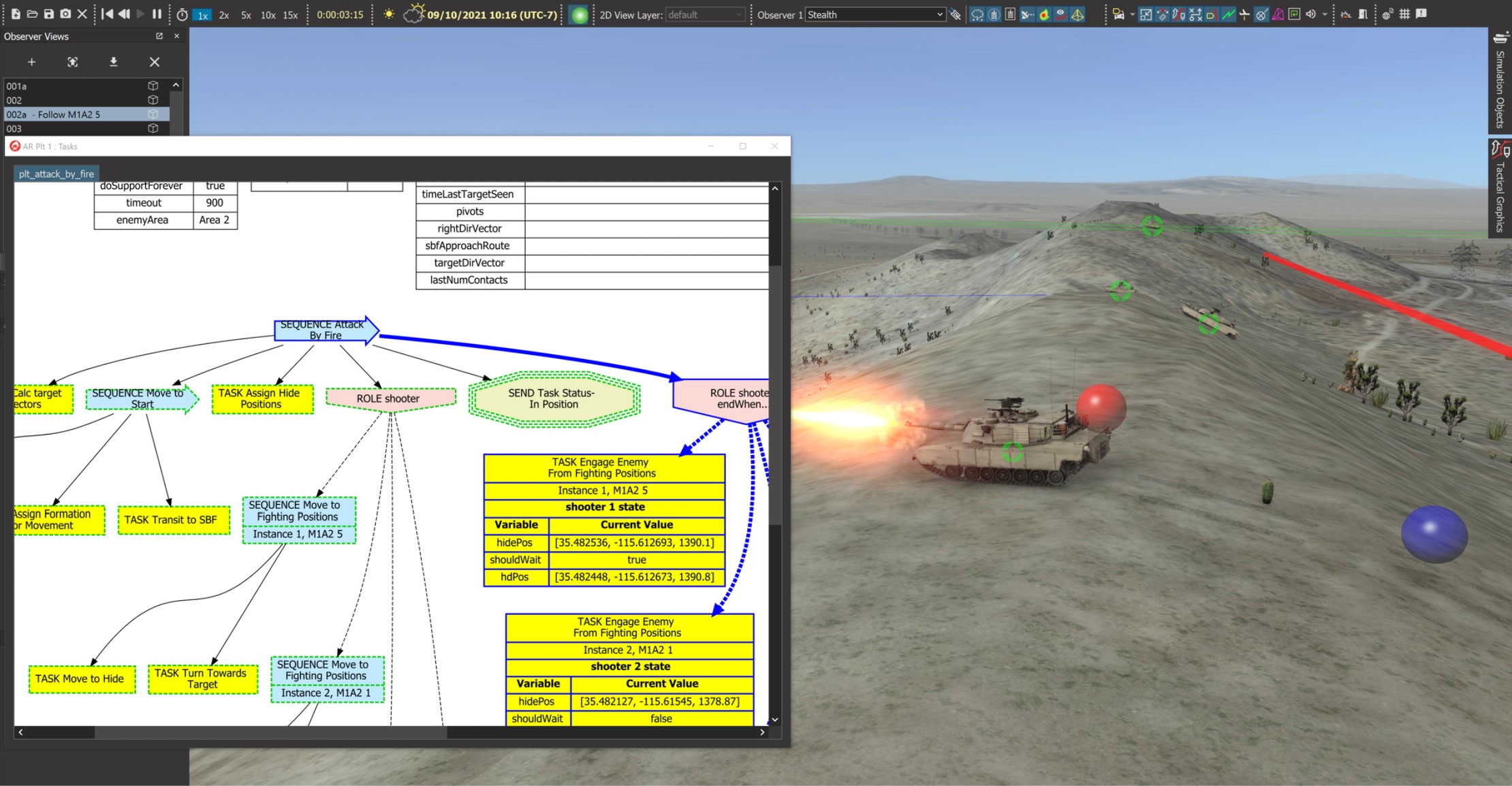
Developers
- Use the APIs to override, extend, or add new simulation, visualization, and interface functionality to all the engines and interfaces in the MAK ONE technology stack.
